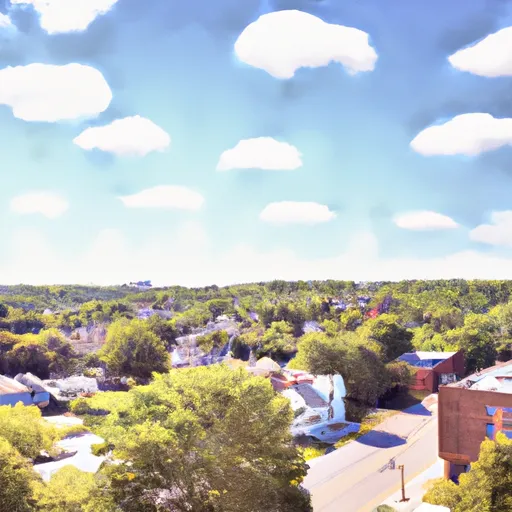-
 Snoflo Premium
Snoflo Premium
Get unlimited access to all our content
With no Ad interruptions! - Start Your Free Trial Login with existing account
Needham-Heights
Eden Index
Climate
9.3
•
Recreation
5.0
•
Community
8.8
•
Safeguard
7.7/10

Needham Heights is a charming neighborhood located in Needham, Massachusetts. The climate in this region is classified as humid continental, characterized by warm summers and cold winters. Summers are generally pleasant with temperatures ranging from 70°F to 85°F, while winters bring cold and snowy conditions, with temperatures averaging between 20°F and 40°F.
The hydrology constituents in Needham Heights include the Charles River and its tributaries, which offer various recreational opportunities. The Charles River provides a picturesque backdrop for outdoor activities like kayaking, canoeing, and fishing. There are also parks and green spaces throughout the neighborhood, such as Cutler Park Reservation, which boasts walking trails, picnic areas, and opportunities for birdwatching.
Outdoor enthusiasts can enjoy biking or walking along the Charles River Bike Path, which stretches for miles, connecting Needham Heights to nearby towns. Additionally, there are several golf courses in the area, allowing residents and visitors to enjoy a round of golf surrounded by beautiful scenery.
Overall, Needham Heights offers residents and visitors a pleasant climate, picturesque waterways, and a range of outdoor recreation opportunities, making it an ideal location for nature lovers and those seeking an active lifestyle.
What is the Eden Index?
The Snoflo Eden Index serves as a comprehensive rating system for regions, evaluating their desirability through a holistic assessment of climate health, outdoor recreation opportunities, and natural disaster risk, acknowledging the profound impact of these factors on livability and well-being.
Climate Health Indicator (CHI): 9.3
Needham-Heights receives approximately
1244mm of rain per year,
with humidity levels near 72%
and air temperatures averaging around
10°C.
Needham-Heights has a plant hardyness factor of
6, meaning
plants and agriculture in this region thrive during a short period during spring and early summer. Most
plants will die off during the colder winter months.
By considering the ideal temperature range, reliable water supplies, clean air, and stable seasonal rain or snowpacks, the Climate Health Indicator (CHI) underscores the significance of a healthy climate as the foundation for quality living.
A healthy climate is paramount for ensuring a high quality of life and livability in a region, fostering both physical well-being and environmental harmony. This can be characterized by ideal temperatures, reliable access to water supplies, clean air, and consistent seasonal rain or snowpacks.
Weather Forecast
Streamflow Conditions
Massachusetts-Rhode Island Coastal
Area Rivers
Massachusetts-Rhode Island Coastal
Snowpack Depths
Massachusetts-Rhode Island Coastal
Reservoir Storage Capacity
Massachusetts-Rhode Island Coastal
Groundwater Levels
Recreational Opportunity Index (ROI): 5.0
The Recreational Opportunity Index (ROI) recognizes the value of outdoor recreational options, such as parks, hiking trails, camping sites, and fishing spots, while acknowledging that climate plays a pivotal role in ensuring the comfort and consistency of these experiences.
Access to outdoor recreational opportunities, encompassing activities such as parks, hiking, camping, and fishing, is crucial for overall well-being, and the climate plays a pivotal role in enabling and enhancing these experiences, ensuring that individuals can engage in nature-based activities comfortably and consistently.
Nearby Ski Areas
Catastrophe Safeguard Index (CSI):
The Catastrophe Safeguard Index (CSI) recognizes that natural disaster risk, encompassing floods, fires, hurricanes, and tornadoes, can drastically affect safety and the overall appeal of an area.
The level of natural disaster risk in a region significantly affects safety and the overall livability, with climate change amplifying these risks by potentially increasing the frequency and intensity of events like floods, fires, hurricanes, and tornadoes, thereby posing substantial challenges to community resilience and well-being.
Community Resilience Indicator (CRI): 8.8
The Community Resilience Indicator (CRI) recognizes that education, healthcare, and socioeconomics are crucial to the well-being of a region. The CRI acknowledges the profound impact of these elements on residents' overall quality of life. By evaluating educational resources, healthcare accessibility, and economic inclusivity, the index captures the essential aspects that contribute to a thriving community, fostering resident satisfaction, equity, and social cohesion.

